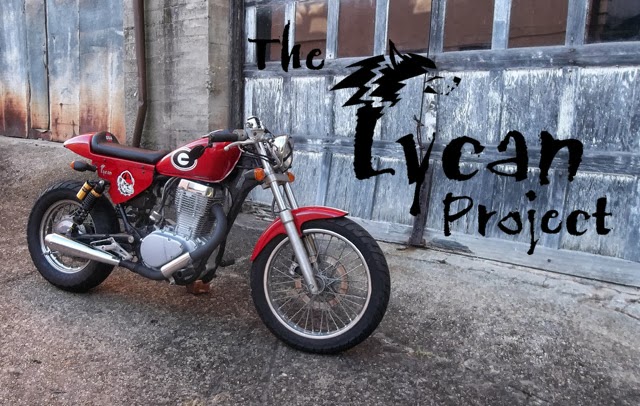I sanded the surfaces down used compressed air and blew all the trash out from years of neglect.
Next I taped them off and touched up the buttons with a little paint. Not perfect but better.
When I removed the throttle tube from the control housing it was at best a stop gap item that had been heavily modified.
I purchased a new one on ebay for cheap.
I also took the time to adjust the decompression unit on the head. A lot of these units have failed on older bikes. What this does is open the exhaust valve for just a moment during starting. This takes pressure of the cylinder and makes starting easier on the starter. I followed the trail in the Clymers Manual and did the proper test on all components. Everything seems to be opperating properly. After adjusting the cable I cranked the bike and watched the decompression lever move as it should. Success!!
I have never been very happy with the front brakes on this bike. The real issue is the fact that it is a single disk with a single piston caliper. I feel sure that the hose and caliper were original equipment, aka 28 years old. I had replaced the master cylinder with a 2005 unit earlier and have noticed a leak at the caliper. I purchased a 2006 caliper from ebay and a new brake line from the dealer. First I drained the system from the master cylinder with a syringe.
Then I removed the caliper and drained the system at the lower end into a bucket. I leaned the bike over by adjusting the tie downs to get the master cylinder as level as possible. This would help when I refilled the system as well as with contamination on the lower end. I was careful to cover all areas with shop towels as brake fluid is corrosive.
Reassembly with the replacement parts. I made an effort to clean the areas as well as possible. Looks pretty nice.
Refilling the system is a time consuming operation. Air is not your friend and getting all of it out takes awhile, one bubble at a time. As the system is now you pressurize the system and hold the lever in, open the bleeder to allow the fluid and air out, then close the bleeder. Only after you have closed the bleeder can you release the brake lever. Releasing the lever with the bleeder open will suck air and dispelled fluid back into the system. This is complcated on this bike by the fact that the lever and the caliper are on opposite sides of the bike. You pretty much have to give it a reach around. Ha! It takes a good while to get the system to begin to presurize. It seemed like 15 miniutes that I was not accomplishing anything. Once it does it is pretty much straight forward. Speed bleeders make this a much easier operation. I will order one for this bike. I will let the bike set for a couple of days and let any additional air settle. Then bleed them again. Gee, I'm turning into quite the mechanic!













































